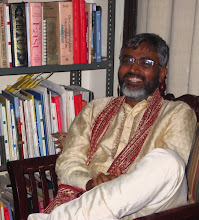India: Bangladesh
The Hasina visit and Bangladeshi elections
Exclusive to Asian Tribune June 29, 2006
‘Political pilgrimage!’ That is how a functionary of the ruling Bangladesh Nationalist Party (BNP) described the recent visit of former Prime Minister and leader of opposition Sheikh Hasina to India. He was also playing with Hasina’s visit to the shrine of Sufi Saint Hazrat Khwaja Moinuddhin Chishti at Ajmer, the other purpose of her visit.
If one were to take the claims of the Awami League seriously, Hasina came India primarily to receive ‘the prestigious’ Mother Teresa award conferred upon her by a little-known NGO based in Kolkata.
If people were mistaken that Hasina was indeed the incumbent Prime Minister of Bangladesh, they could not be faulted. India did not want to give any ‘wrong signal’ to the Bangladeshi government and hence usual the trappings diplomatic protocols were conspicuous by their absence.
There were however, substantial interactions between the visitor and a host of Indian leaders. Among others Hasina met Prime Minister Manmohan Singh, Congress President Sonia Gandhi, former Prime Ministers Atal Behari Vajpayee and I K Gujral and Leader of Opposition L K Advani. While Defense Minister Pranab Kumar Mukherjee hosted a private lunch in her honor, she also met junior Foreign Minister E Ahmad. During her brief stopover in Kolkata, she met former West Bengal Chief Minister Jyoti Basu and thanked him for his cooperation in the conclusion of the 1996 Ganges accord signed during her tenure.
Given the intensity with which Bangladeshi politicians conduct their affairs, Hasina could not avoid hammering on the failures of the BNP-led coalition and doubted whether the next general elections would be free and fair and then headed for home.
The contrast
As they say, timing is everything. Hasina’s visit came just over three months after the visit of Prime Minister Khaleda Zia to India and only a few months before the Jatiya Sangsad elections slated for early 2007.
Since coming to power in October 2001, Khaleda had traveled world over but avoided going to India. For long it was suggested that protocol demanded that it was the turn of the Indian Prime Minister to make a state visit to Dhaka before Bangladeshi Prime Minister could come to India. But when Khaleda finally decided to come to India, this protocol demand was not fulfilled.
The March visit of Khaleda was hastily arranged. Other than two unimportant agreements, it did not address any of the myriad of problems that plague the bilateral relations. The issue of Bangladeshi trade deficit figured only marginally. This lackluster trip some seasoned observers to ponder: why did she come? What was the need for India to roll out red-carpet welcome for an agendaless trip?
This is not true for Hasina. Whether in office or in opposition she had periodically visited India and courted its support, made all polite noises on sensitive issues and often used her trips to carry on her anti-Khaleda tirade.
For its part, India has been equally warm towards Hasina. Irrespective of the party in power, New Delhi had always showed a soft corner for Hasina. The historic ties with Hasina’s father Bangabandu Sheikh Mujibur Rahman as well as the shared secular ethos of the Awami League and mainstream Indian leadership forged a bond between the two. Hence, Congress or BJP, the Indian leaders have been extremely warm towards Hasina and did not hide their preferences, if it came to that.
Furthermore, when she was attacked during an Awami rally in August 2005, Indian leaders made concerned inquiries which naturally irked the Khaleda government. Likewise the killing of former finance minister and senior Awami leader Shah AMS Kibria in January 2005 led to India’s refusal to attend the summit meeting of the South Asia Association for Regional Cooperation (SAARC) originally slated for the following month.
Indeed, the coziness that Hasina generates in India, often contributed to the anti-India sentiments of the BNP and its allies.
Hobson’s choice
It is undeniable that Hasina and the Awami are friendlier towards India than Khaleda and the BNP. Indian leaders have often found it easier work with the former and have often difficult to communicate with the latter and establish a modicum of relations. Nor was the Awami ever compelled to raise the anti-India antics during elections. Above all Awami and its leadership are seen as a moderate, liberal and culturally inclusive political force in Bangladesh. Unlike others, Awami has been in the forefront of defending the rights of the Hindu minorities and cultural pluralism.
These very same factors also work against the Awami. As the country is increasingly becoming intolerant and conservative, liberal space in Bangladesh is shrinking. Its proximity towards India makes the Awami an easier target for the BNP and its allies. Since the Hindu minorities are traditionally viewed as Awami supporters, there is no incentive of the BNP to speak for their rights and protect them from extremist violence.
There is however, a much larger dilemma. Even if Hasina were to return to power, most of the problems that confront the Indo-Bangladeshi relations will continue. The Awami has no answers to problems such as flow of illegal immigration into India, mounting trade deficit or suspected presence of Indian militants inside Bangladesh. As highlighted by the controversy over the supply of Bangladeshi gas, its pro-India image would be a liability for the Awami League and will prevent it from making even the minimum concessions that are needed for an agreement.
The issue is not being closer to India but being able to alleviate the Indian concerns. Hence, Awami victory per se in the 2007 elections will not ensure an improvement of Indo-Bangladeshi relations.
However, having hosted Khaleda and Hasina in quick succession, India perhaps might consider inviting leaders from the Jatiya Party as well as the Jama'at. This would complete the circle of its non-partisan attitude towards Bangladesh when that country is heading for an acrimonies election fever.
Web link

